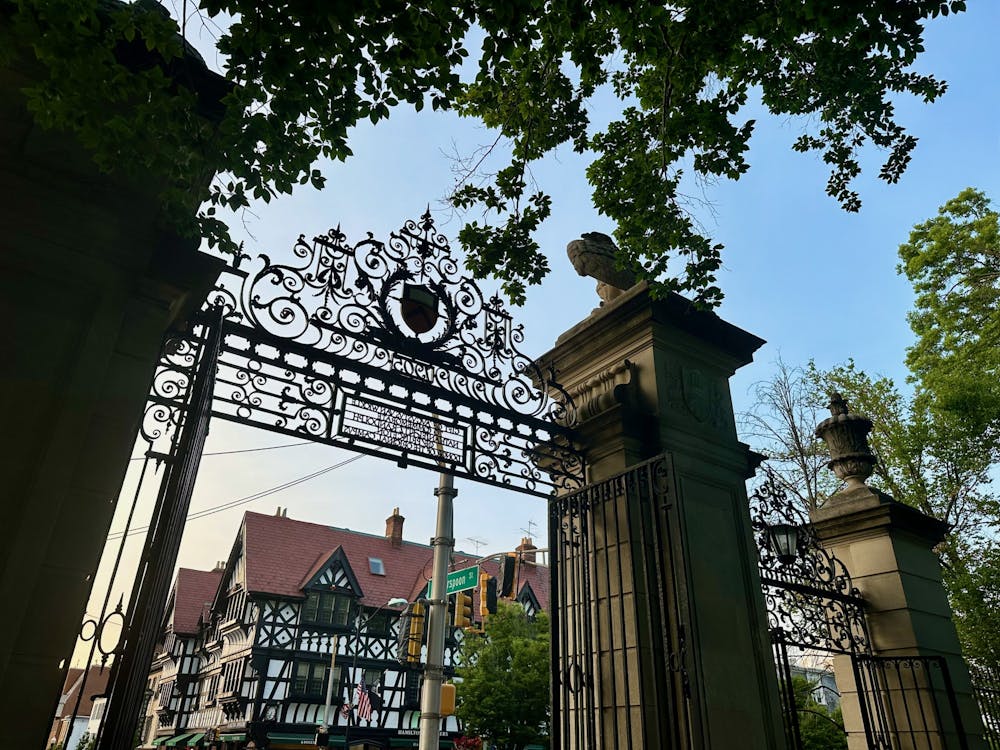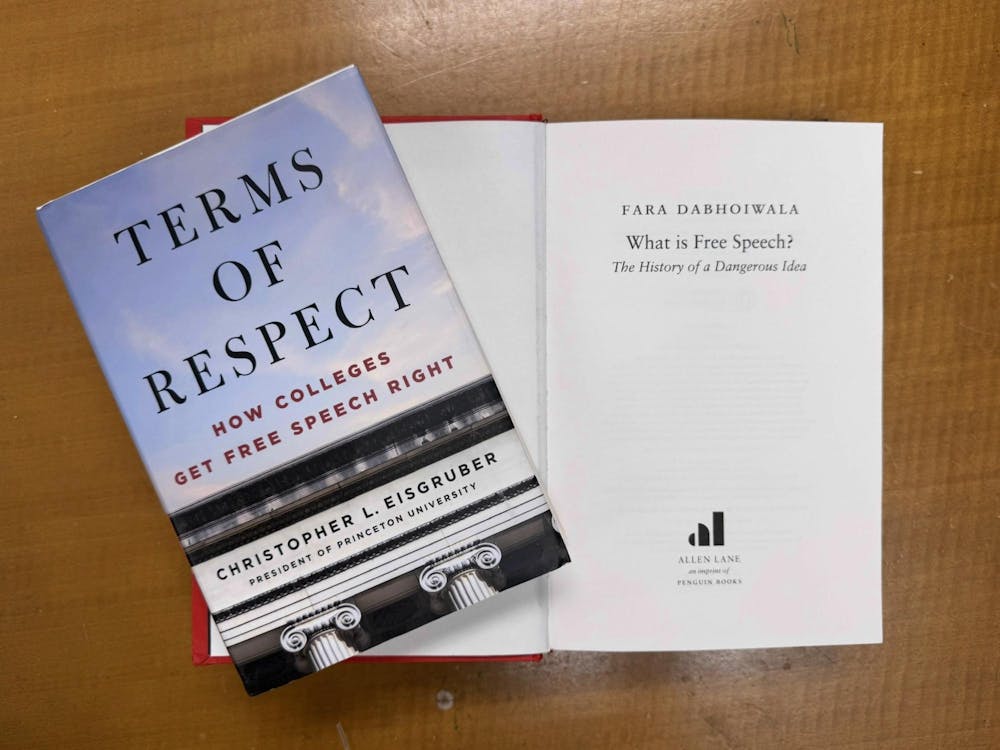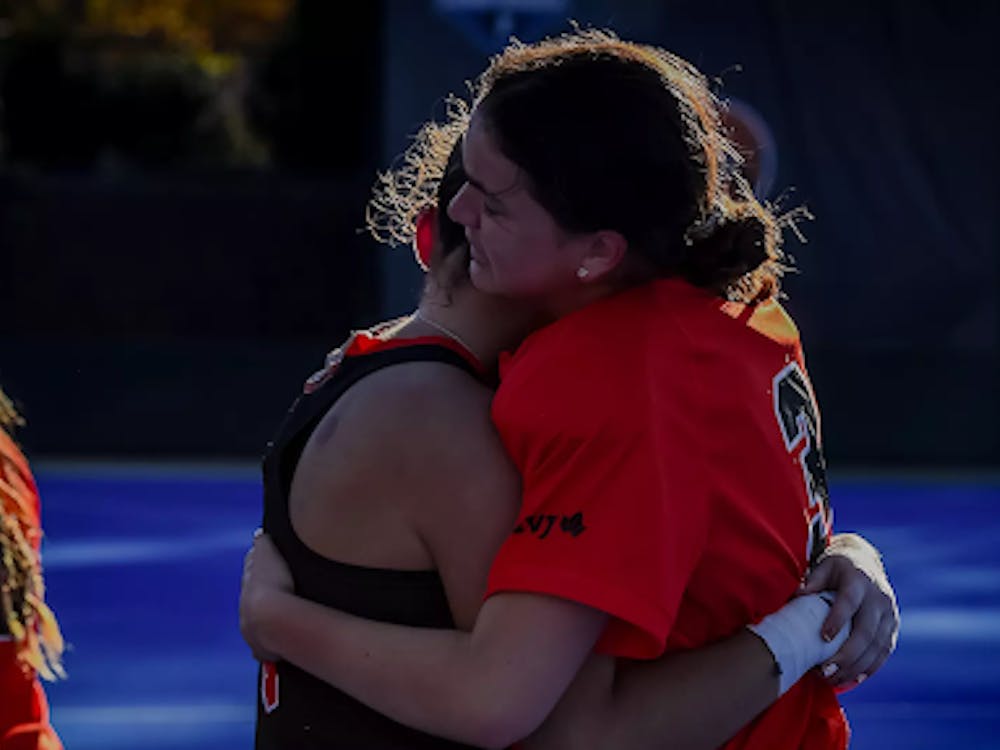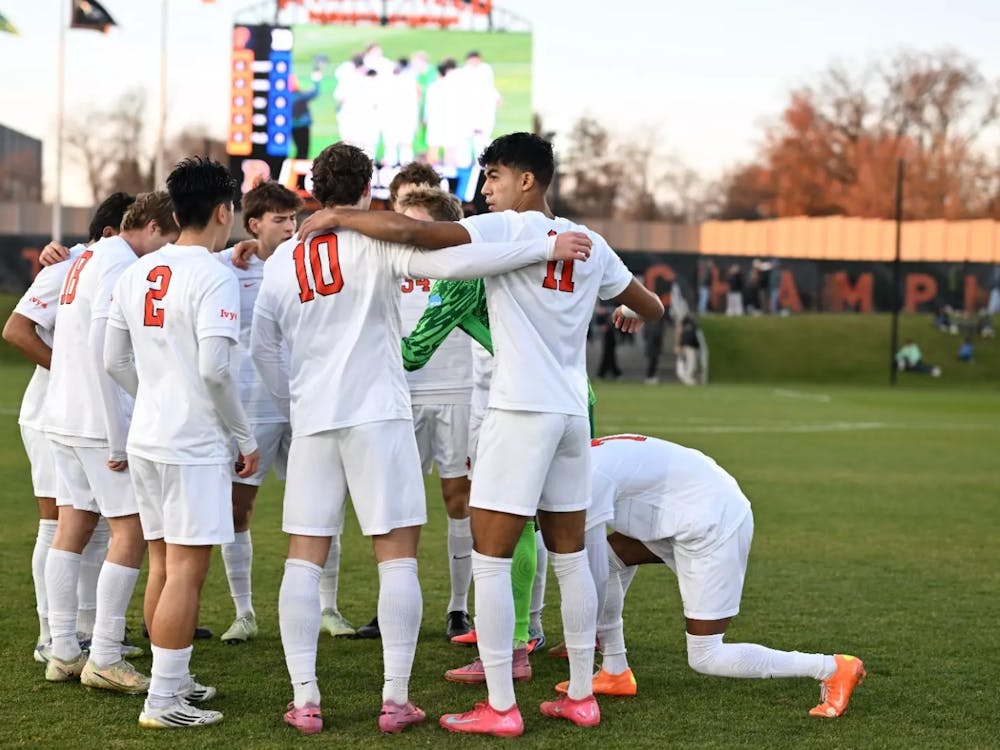Across my time as a Princeton undergraduate, I’ve sung along to “Old Nassau” more times than I care to count. By now, I’ve learned to drop an octave for the song’s latter half lest I run out of room at the top of my vocal range for the final notes. But there’s another life in which I and so many other Princetonians before me would’ve learned to sing the same words of our alma mater to another tune: Before the music was written, there was first an attempt to simply use the tune of “Auld Lang Syne” — that New Year’s classic which so beautifully yet hauntingly bids farewell to the old with some hope for the new. And while Commencement may be a celebratory occasion to mark the turning of a new chapter, these final moments before it, I’ve found them to be so weighed down by the haunts of farewells.
I first learned of this alternate possibility for our school’s song in January. Right after Christmas, it’s of little surprise that my immediate reaction was to think of the ending to “It’s a Wonderful Life,” starring alumnus Jimmy Stewart ’32. I focused on the film’s end when Stewart’s character, George Bailey, basks in the generous love of all those around him, those who sing “Auld Lang Syne” to him as the camera closes in on a note left written by the angel Clarence: “Remember no man is a failure who has friends.”
To close out a film, to close out a year with such a message of friendship, of camaraderie and love, can be of no coincidence. These friendships are what tie us so profoundly to auld lang syne — to time gone by. This message lies at the heart of the song, one rarely, if ever, sung without company, one reminiscing on old friendship with a feeble hope for its endurance against the seas of passing time that have roared between.
It’s this idea, I believe, that has kept generations of Princetonians going back, returning to this patch of central New Jersey year after year to fill their hearts with the sounds of locomotives and tiger roars, without a steam train or wild tiger in sight, surrounded only by classmates and their families. Every trip back through FitzRandolph Gate is buoyed by the dogged hope that the love and camaraderie one can feel every day here will remain alive five, twenty-five, fifty years later — until finally we sit among the Old Guard, dwindling in numbers but leading the way for those classes following with booming cheers and song.
All this leaves me feeling like the tune of “Auld Lang Syne” would have been most fitting for the words of “Old Nassau” if only those students over a century ago could have made them work together. After all, despite their unachieved harmony, they carry much the same message. This might not be so evident with the singular verse and chorus sung most days now, but ensuing verses largely forgotten in all but written records echo their abandoned melody.
“And when these walls in dust are laid, / With reverence and awe, / Another throng shall breathe our song, / In praise of Old Nassau.”
In all the admissions marketing and all the alumni commotion, Princeton’s long tradition — not its status quo but its ritual — can often be lost to the jargon of “a strong alumni network” or to the great pride in one’s individual class. However, this verse sings to something deeper, something long buried at the heart of this school, way deeper than any cannon on the green. It sings of that ritual I’ve slowly learned to recognize in my own Princeton life. It is that ritual of adopting this place as one’s own, tending to its people and its project, and then teaching the next students to do the same. As a freshman I could not easily recognize this, but years later, I can now look back on all those moments of tender teaching — of learning and teaching to love all that one stumbles by on this campus’s many paths. Turning, over and over this cycle continues, with as much eventuality as the dust building up upon the old stones of Nassau Hall.
“Till then with joy our songs we’ll bring, / And while a breath we draw, / We’ll all unite to shout and sing: / Long life to Old Nassau.”
I can’t help but wonder why it is that we are so quick to mark the momentous occasions of our lives with chant and song. I can think back, at least, to all those previous times I’ve joined in singing our cheers and praise for Old Nassau: at step sings, at the end of Triangle shows, at my regional alumni association’s various parties. I can think of the crowds gathered around the world, waiting for the clock to strike twelve, for the fireworks to shimmer against the dark sky, for the ball to drop. On each of these occasions, regardless of which song it beckons, I tend to almost always reach a point in the chorus when my throat will feel a lump form, my stomach a knot tighten. It is purely instinctual. There seems to be something so essential about these odes to passing time and enduring friendship. It seems to reach at our most basic desire, perhaps even need, for such soothing reminders of the warmth of our community all around us and of its continuity.
Perhaps, however, the words of one song could never really fit the other’s melody. Viewed from another angle, our alma mater posits a response to the other song’s opening question of whether old friends and old times should come to be forgotten. Our old Nassau for which we gather year after year demands that neither time nor friends be let to pass simply into the dark vaults of our memory.
And so, the farewell to these undergraduate years becomes a little less haunting. Come Commencement and every time after when we gather as Princetonians, as tigers with our orange and black, we may find ourselves beating our hearts as our right fists fly into the air and our voices equally soar to the tune, to the praise of old Nassau. We may find ourselves singing together again, thinking of all the times gone by, and we can rest assured in this promise elicited from “Old Nassau.” It is a promise of neither friend nor time forgotten. However much it may feel like so, for all us tigers, we can rejoice with one accord in the promise of there never really being one last time, only a long life at old Nassau.
José Pablo Fernández García is a Princetonian from Ohio and Head Editor Emeritus for The Prospect at the ‘Prince.’ As of May 30, 2023, he is no longer a senior but now an alumnus, making this essay his final entry as an undergraduate staffer or editor for the ‘Prince.’ He can be reached at jpgarcia@princeton.edu until this account is shut off and on Twitter and Instagram @josepablo_fg for the foreseeable future.









